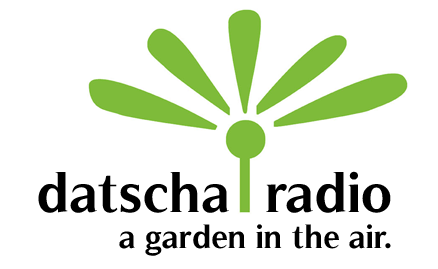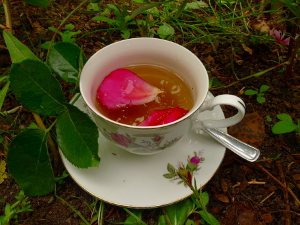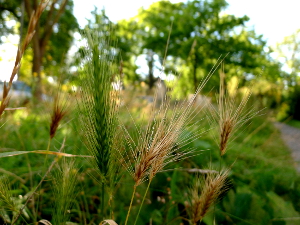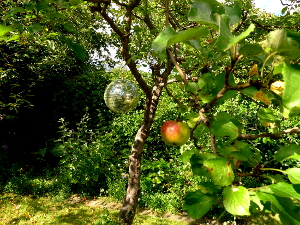Die Sprache der Vögel (radia double feature) | The Language of the Birds (radia double feature)

Eine geheime Sprache. Und doch überall im Garten zu hören. Die Sprache der Vögel.
Eine Sprache, die eine und viele ist.
Zwei ihrer Variationen können wir in einem Doppelprogramm kennenlernen, kredenzt von VogelkundlerInnen aus dem Radio-Kunst-Netzwerk radia.fm.
Zunächst belauschen wir sie mit Sally McIntyre an der neuseeländischen Küste, wo sich veritable Radio-Vögel unter die heimischen Arten mischen:
“Small, distributed in trees, in hollow logs and on the ground, a flock of radio receivers inhabits a forest area near a large native Rata tree on Kapiti, an island off the coast of the lower North Island of Aotearoa/New Zealand. Slowly, the radios enter the soundscape of the surrounding biosphere, chime in with birdsong captured in field recordings, gathered in the same area on previous days, making audible the signal from a small-radius mini FM transmitter. Down the mountain, a young male Kokako has been calling for the last three months, unsuccessfully trying to attract a mate. The main thing he has been able to attract are the attentions of other, more common endemic forest birds, Tui and Bellbirds, who, being skilled mimics, have started to imitate his calls. Perhaps in response to such unwanted attentions, he has not been heard for the past week, but the radio remembers him, playing back his song in an evocation of both the long history of human vocalisation of birds in this place, and the birds’ own complex mimicry of each other.
Rarely heard but even more rarely seen in the wild, the Kokako, a shy inhabitant of deep forest, and one of New Zealand’s most endangered birds, whose calls have been described variously as ‘flute-like, organ-like, bell like, sweet, plaintive, haunting and ventriloquial’, has lived on this island since 1991, when thirty three birds were transferred from three remnant populations elsewhere in the North Island. These populations, artificially lodged together into a new environment, yet all sourced from different localities and having their own dialects, originally didn’t recognise each other as the same species, and so breeding was, understandably, unsuccessful. In the ensuing decades, it seems, the development of a ‘Kapiti dialect’ has emerged on the island, and the birds have begun to converse, and to breed, and become tentatively established locally. The South Island subspecies of the Kokako has been declared extinct, and until recently the North Island variant was declining toward the same fate, but in the last few years, due to such placement on offshore predator-free islands, the birds have become one of the recent success stories of New Zealand conservation species management.
A document of a single take performance with no human listeners, beginning and ending as an unadulterated recording of the sounds of the locale in which it was enacted, this mini FM transmission subtly weaves various other recordings from the same location at other times of day into the extant soundscape, a collected sound library begun with the very early morning chorus and progressing toward midday, the time when the piece was transmitted. Shifting sound tonalities are heard, these are entirely due to the aforementioned ‘flock’ of radios and how they are positioned in relation to the stereo microphones used to record the piece. Static is heard when the radios leave this radius of transmission, the territory of the signal marking its place in the forest with song, shards of noise signifying its breach, echoing its placement on an island in a biosecure, highly managed environment forever on the lookout for tears in the fabric, and also birdsong itself as a highly territorialised marker of location and identity. The chiming dawn chorus of bellbirds at the piece’s apex thins out to eventually become a duet of call and response in real time between a live Kokako, attracted by the transmission, and the radios switching off and on as they transmit the song of the same bird, a disjunctive ventriloquistic mediated discourse, not without its own poetry, bird and radio calling to each other for an extended moment over the thick native tree wooded valley.
radio d’oiseaux (kokako variations), through its fabric of forgetting and remembering, of dialect and localisation, ponders the hope for an environmentally aware media that doesn’t approach environment from the perspective of the covetous collector or become a mere one-way conduit for the human ear, but leaves the sounds where they are, taking the advice of the New Zealand environmental care code: Toitu te whenua (leave the land undisturbed), at the same time risking an indulgence of the radio’s secret fantasies of interspecies communication, of not only being a sender but also a receiver, of joining in with the chorus and listening to its localised specificity, of being part of the living soundscape rather than merely part of its museum.” [S.McI.]
Im Anschluss folgen wir Wolfgang Müller nach Island, wo bekanntlich besonders kunstsinnige Stare nisten:
“In summer 1997 discovered Wolfgang Müller the House on the small Island Hjertøya opposite the West-Norwegian city Molde, in which Kurt Schwitters stood during summertime from 1932 on. It is full of destroyed Collages, writings and over and over painted plaster columns. Till a few years before the door stood open and everybody could join in. In front of the house, laying in the grasses, Wolfgang Müller listened once a Starling producing strange noises. He noticed, that in anyway he already knew these sounds from before. And he reminded passages of the Ursonate by Kurt Schwitters.
Starlings are masters of Copyart. A former grandfather or grandmother of this starling singing passages of the ursonate should have heared Kurt Schwitters in 1932 on the Island. Wolfgang Müller recorded the voice of the copyartist-starling singing Kurt Schwitters.” [W.M./R.W.]
Credits:
Datscha-Radio, miss.gunst und ihr inverses Kaninchen danken den folgenden (Radio-)KünstlerInenn, Klangsammerlnnen und Radiostationen: Sally Ann McIntyre, her Radio Cegeste and Radio One, Dunedin/New Zealand, für eine radio-ornithologische Exkursion zu den Radio-Vögeln; Wolfgang Müller und Radio Corax, Halle, für eine kundige Einführung in Leben und Weben kunstsinniger Stare; sowie dem Radio-Kunst-Netzwerk radia.fmk für die wie immer grossartige Partnerschaft.
[Bildchen: Feder, gelassen… VK cc-by-nc-sa]
Read More








